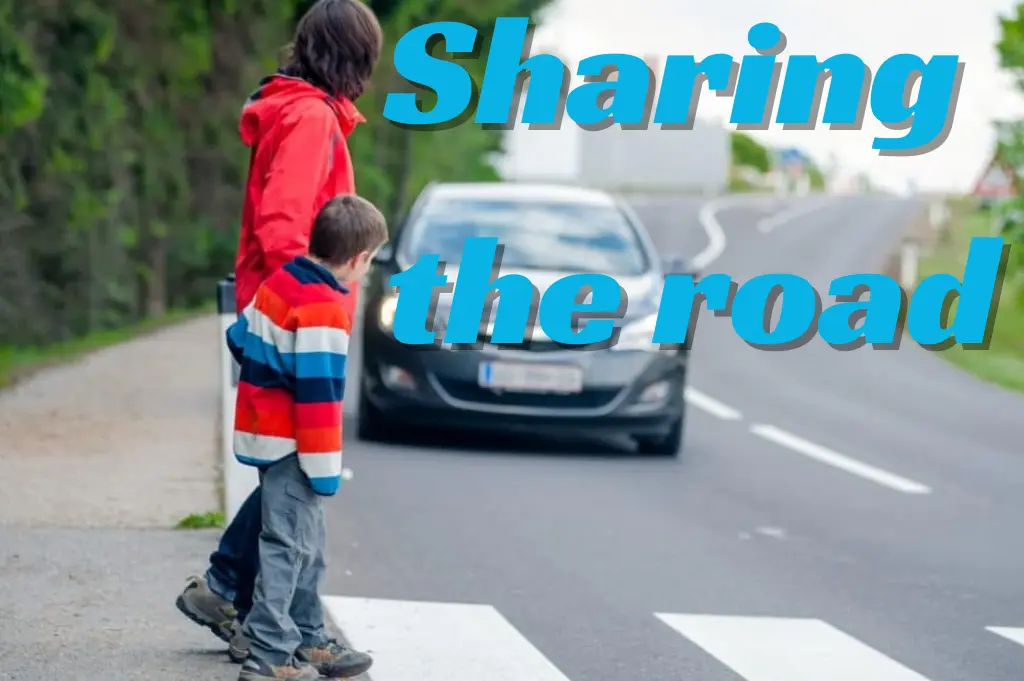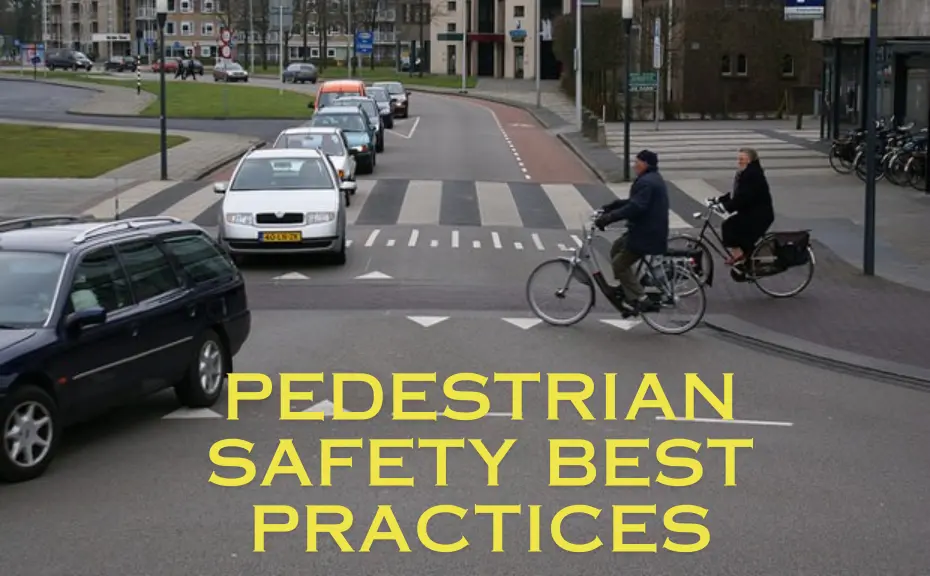Sharing the road with pedestrians is an integral aspect of responsible and safe transportation. Whether you are a driver, cyclist, or pedestrian yourself, understanding and adhering to rules and etiquette for pedestrian safety is crucial for preventing accidents and creating a harmonious coexistence on our roadways.
The importance of sharing the road with pedestrians
In this comprehensive guide, we will explore the importance of sharing the road with pedestrians, key safety considerations for drivers and pedestrians, the role of infrastructure in pedestrian safety, and ways to promote a culture of mutual respect and awareness.
I. The Importance of Sharing the Road
A. Vulnerability of Pedestrians
Pedestrians are the most vulnerable road users, lacking the protection of a vehicle’s frame. It is crucial for drivers and cyclists to recognize and respect their vulnerability, understanding that even a momentary lapse in attention can lead to severe consequences.
B. Legal and Ethical Responsibility
Drivers and cyclists have a legal and ethical responsibility to yield to pedestrians. Traffic laws are designed to prioritize pedestrian safety at crosswalks and intersections. Respecting these laws not only upholds legal standards but also contributes to a safer and more orderly traffic environment.

II. Safety Considerations for Drivers
A. Yielding at Crosswalks
One of the fundamental aspects of sharing the road with pedestrians is yielding at crosswalks. Drivers must come to a complete stop when pedestrians are crossing the road at marked or unmarked crosswalks. This allows pedestrians to traverse the roadway safely.
B. Right of Way
Pedestrians generally have the right of way at crosswalks and intersections. Drivers should be attentive to pedestrian signals and yield the right of way even if not explicitly indicated. Avoiding aggressive maneuvers and respecting the right of way promotes a safer and more cooperative road environment.
C. Safe Turning Practices
When turning at intersections, drivers should be especially cautious of pedestrians. Check blind spots for pedestrians who may be crossing, and yield to them before completing the turn. This is crucial for preventing collisions, particularly during right turns while sharing the road.
D. Reduced Speed in that Zones
In areas with a high concentration of pedestrians, such as school zones, residential areas, or shopping districts, drivers should reduce their speed. Slower speeds provide more reaction time, reducing the likelihood of accidents and creating a safer environment for both drivers and pedestrians.
III. Safety Considerations
A. Crossing Safely
They play an active role in their safety by crossing roads safely. Always use designated crosswalks and obey traffic signals. Make eye contact with drivers whenever possible to ensure they are aware of your intention to cross.
B. Avoiding Distractions
Pedestrians, like drivers, should minimize distractions while on the road. Avoid using smartphones, headphones, or engaging in activities that take attention away from the immediate surroundings. Maintaining awareness is key to preventing accidents.
C. Walking Against Traffic
When sidewalks are unavailable, they should walk facing oncoming traffic. This allows them to see approaching vehicles and react accordingly. Walking against traffic provides an additional layer of safety, especially in areas without designated pedestrian pathways.
D. Visibility in Low-Light Conditions
During dawn, dusk, or nighttime, pedestrians should enhance their visibility. Wear reflective clothing, use flashlights, or carry glow-in-the-dark accessories to make it easier for drivers to spot them in low-light conditions.
IV. Infrastructure and Pedestrian Safety
A. Designated Pedestrian Crossings
City planners and transportation authorities play a crucial role in pedestrian safety by designing and maintaining well-marked crosswalks. Clearly designated pedestrian crossings with visible signage and road markings help drivers identify areas where pedestrians are likely to cross.
B. Pedestrian Signals
Pedestrian signals, including traffic lights and walk signals, provide clear guidance to both pedestrians and drivers. The synchronization of traffic lights with pedestrian signals helps manage the flow of traffic and enhances safety for all road users.
C. Sidewalks and Footpaths
Properly maintained sidewalks and footpaths are essential for pedestrian safety. Clear, obstacle-free pathways ensure that pedestrians have a designated space separate from vehicular traffic. Municipalities should prioritize the construction and maintenance of safe walking infrastructure.
D. Traffic Calming Measures
Implementing traffic calming measures, such as speed bumps, raised crosswalks, and narrowed roadways, contributes to pedestrian safety. These measures encourage drivers to reduce speed and remain vigilant in areas where pedestrians are likely to be present.
V. Promoting a Culture of Mutual Respect and Awareness
A. Education and Awareness Campaigns
Public awareness campaigns play a vital role in fostering a culture of mutual respect on the road. Educational initiatives can target both drivers and pedestrians, providing information on the importance of shared responsibility and safe practices.
B. Community Engagement
Engaging communities in discussions about pedestrian safety helps build a sense of shared responsibility. Local community organizations, schools, and government agencies can collaborate to organize events, workshops, and initiatives focused on creating safer road environments.
C. Law Enforcement and Accountability
Law enforcement plays a crucial role in ensuring compliance with traffic laws related to pedestrian safety. Strict enforcement of regulations, including penalties for violations, creates a deterrent and reinforces the importance of responsible road behavior.
D. Urban Planning for Walkability
Cities and urban planners should prioritize walkability in their designs. Creating pedestrian-friendly environments, complete with well-lit pathways, green spaces, and amenities, encourages more people to walk and enhances overall road safety.
VI. Global Initiatives and Best Practices
A. Vision Zero
The Vision Zero initiative, adopted by several cities globally, aims to eliminate traffic fatalities and severe injuries. It emphasizes a holistic approach that includes road design, education, and law enforcement to create safer roadways for all users, including pedestrians.
B. Pedestrian Safety Best Practices
Studying and implementing best practices from around the world can provide valuable insights into improving pedestrian safety. Initiatives that prioritize pedestrian zones, implement smart technology, and encourage sustainable transportation contribute to creating safer and more accessible urban environments.

Conclusion
Sharing the road with pedestrians is a shared responsibility that requires cooperation, awareness, and adherence to traffic rules. By recognizing the vulnerability of pedestrians, understanding and respecting the right of way, and prioritizing safety in road design, we can create an environment where pedestrians and other road users can coexist safely and harmoniously. In this article we will describe different ways of sharing the road with pedestrians. Through education, community engagement, and global initiatives, we can work towards a future where roads are places of shared responsibility and mutual respect for all.
